MAVERICK CITIZEN
Eastern Cape crisis: Only 1.5% usable water left in Nelson Mandela Bay’s biggest dam
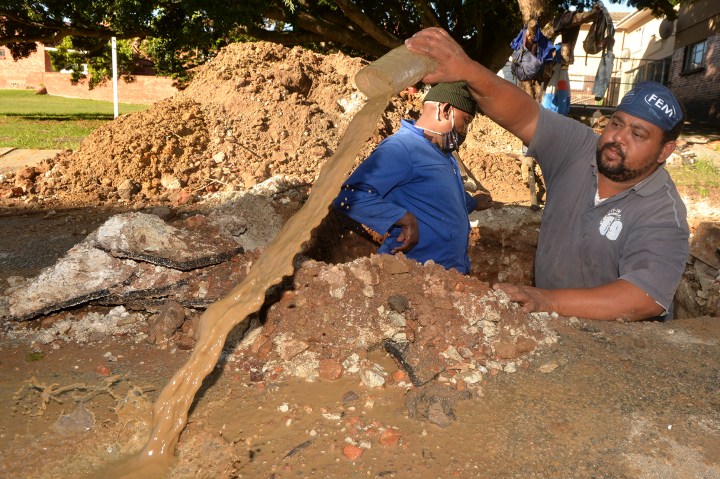
Nelson Mandela Bay’s director of water and sanitation, Barry Martin, looked stressed as he read from the list in front of him. He is dealing with the extreme water crisis in the metro: 1 July, 1 August, 1 October, 1 December. These are the projected dates when, absent some serious rainfall, the city’s four major dams will run dry.
Nelson Mandela Bay’s director of water and sanitation, Barry Martin, paints a bleak picture of the metro’s water situation.
Most worrying is the list in front of him – his projections of what will happen if it doesn’t rain soon. It details how, as the dams empty one by one, dwindling amounts of water will be available to a metro that is home to 1.2 million people. Entire suburbs and townships face running out of water.
Right now, there are only 267 million litres of drinkable water available. The metro’s water consumption ranged between 317 million litres at the beginning of April and 296 million litres on 25 April.
The city’s two big dams, Kouga and Impofu, were last full in 2015.
On 1 July, the city is due to lose its biggest dam. Kouga currently has 1.5% of usable water left. That will reduce the available water to 248 million litres.
By August the Churchill and Impofu dams will be closed. The water available will be 225 million litres.
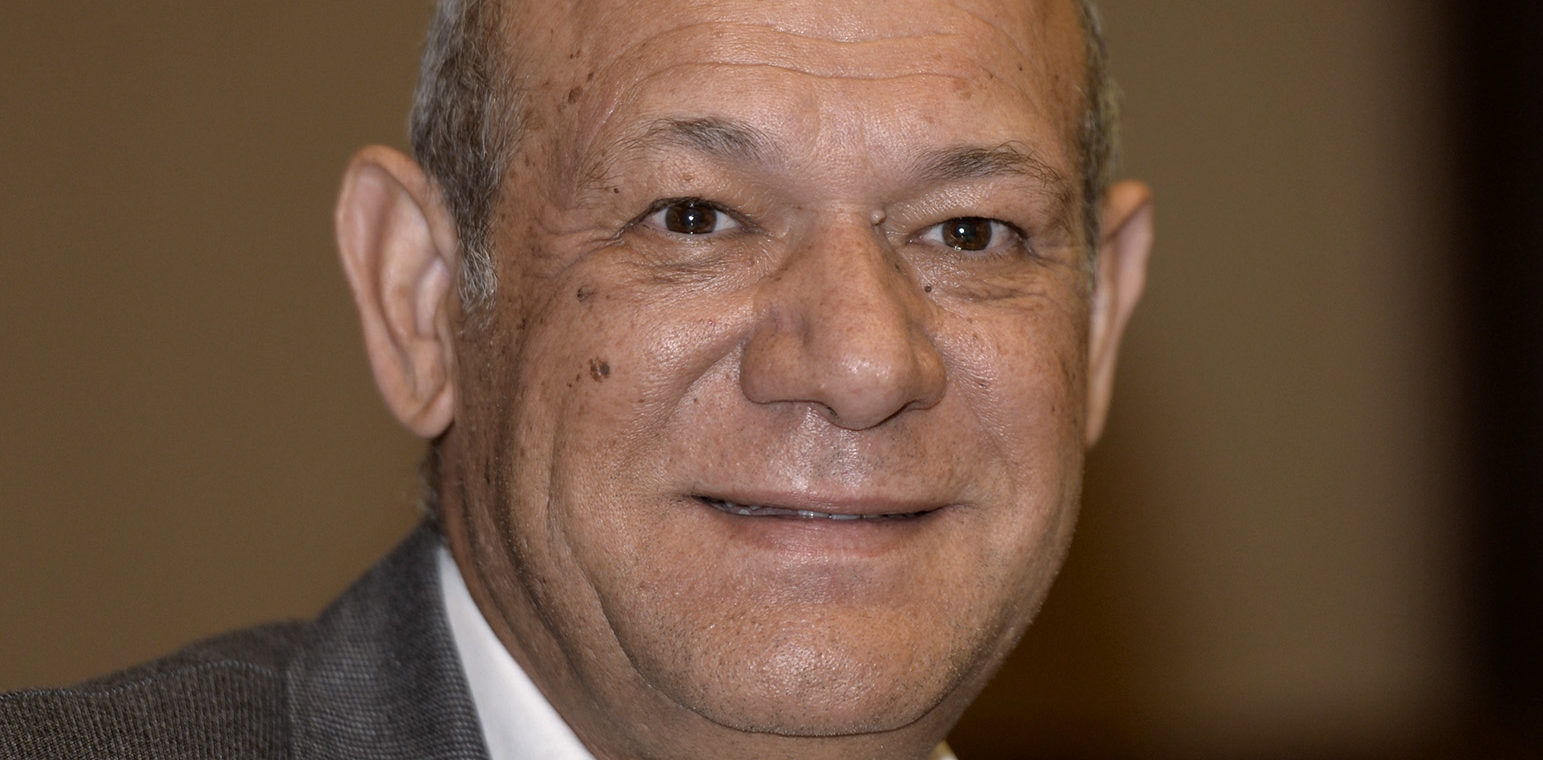
Nelson Mandela Bay director of water and sanitation Barry Martin. (Photo: Deon Ferreira)
By December the amount of water available to the city will be 211 million litres as the last big dam, Groendal, runs dry.
Each day, Nelson Mandela Bay receives 160-170 million litres of water from the Orange River, treated at Nooitgedacht – so the city is not facing an imminent Day Zero, but getting water into homes, businesses and industries will become harder and harder.
Water and sanitation minister Lindiwe Sisulu is due in the metro on Friday to discuss the water crisis with the mayor and other senior officials.
Water levels at the Impofu dam are already below that which can be extracted (called death storage), forcing the municipality to deploy pump barges to access what little remains.
On Thursday, the city council is due to discuss approval for a desalination plant at the Coega Industrial Zone, with another being planned for the seaside village of Schoenmakerskop. But these plants will be too late to rescue the metro from a potential Day Zero. The tender process for the Coega plant only closed recently.

Nelson Mandela Bay Mayor Nqaba Bhanga. (Photo: Deon Ferreira)
DA mayor of Nelson Mandela Bay, Nqaba Bhanga, said his party was shocked to discover in December last year, when the DA took control of the city once again, that R183-million in drought grants had been taken back by the National Treasury after the municipality failed to spend the money.
During this time, the infrastructure portfolio in the metro was headed up by two of the most controversial politicians in the city – former ANC councillor Andile Lungisa and the late UDM councillor Mongameli Bobani, who died of complications due to Covid-19 in 2020.
According to the department of water affairs, R97-million in additional funds was used for groundwater development through the Municipal Disaster Grant. This money was spent on drilling 150 boreholes.
Barry Martin said on Wednesday they were working to bring four of the most effective boreholes on-line.
The metro’s combined dam levels were riding at 12% on Monday, but had dropped in the past 48 hours. Most significantly, the metro’s biggest dam, Kouga, has just 1.5% of usable water left.
Right now, there is no significant rainfall predicted for the city’s catchment area. Garth Sampson, from the South African Weather Service, said the best chance of substantial rain would be from June to August.
“After that it fizzles out,” said Sampson.
He said that what the metro needed was a flood.
“We need more than 50mm to fall in 24 hours over the Langkloof. So what I am saying is that we need a mini, or a major, flood. We are long overdue for one. If we do not get some decent rain this winter, we will have real problems.
“We need to save water. I have been warning about this for ages. Like Noah, nobody has listened to me.”
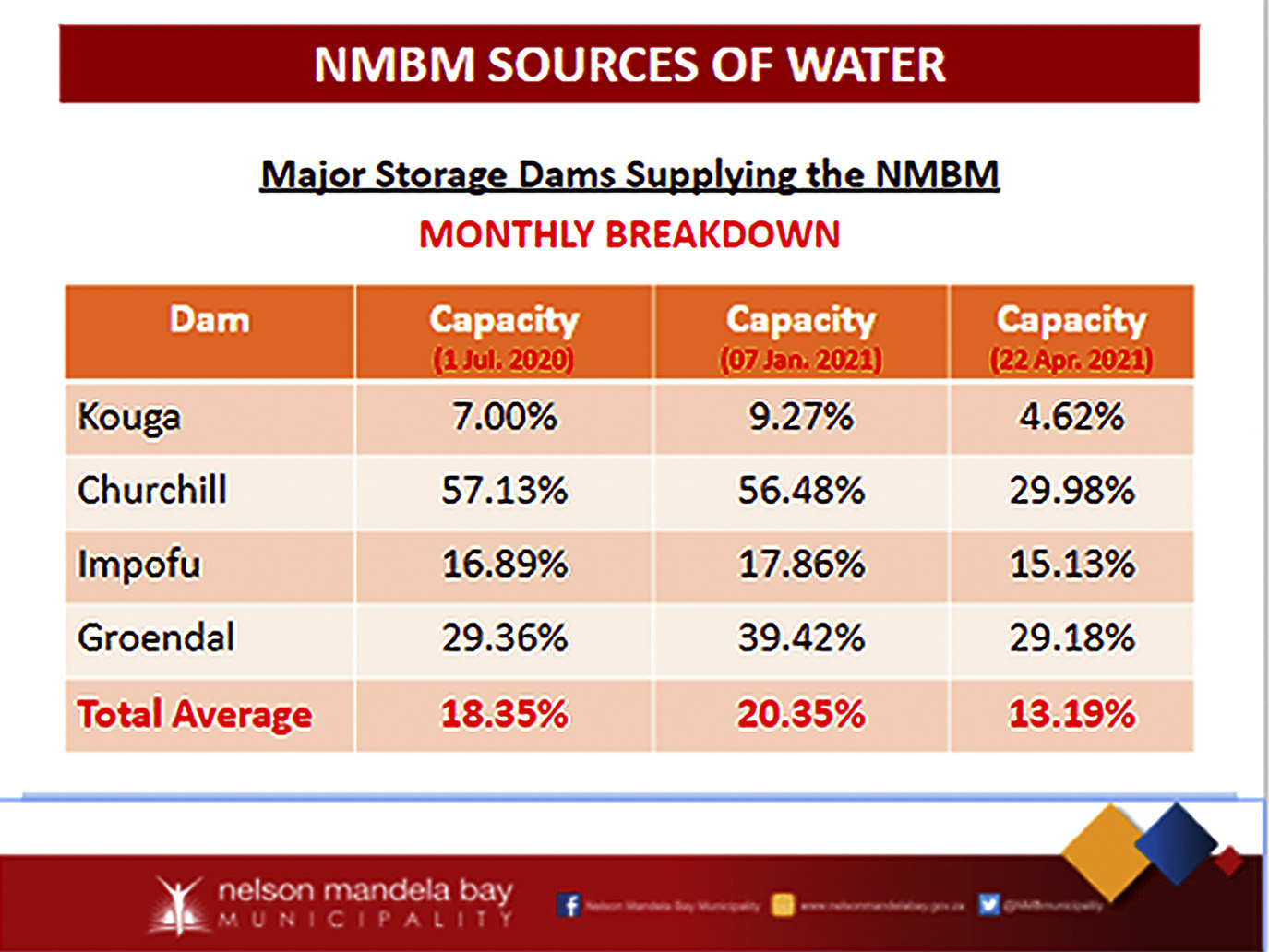
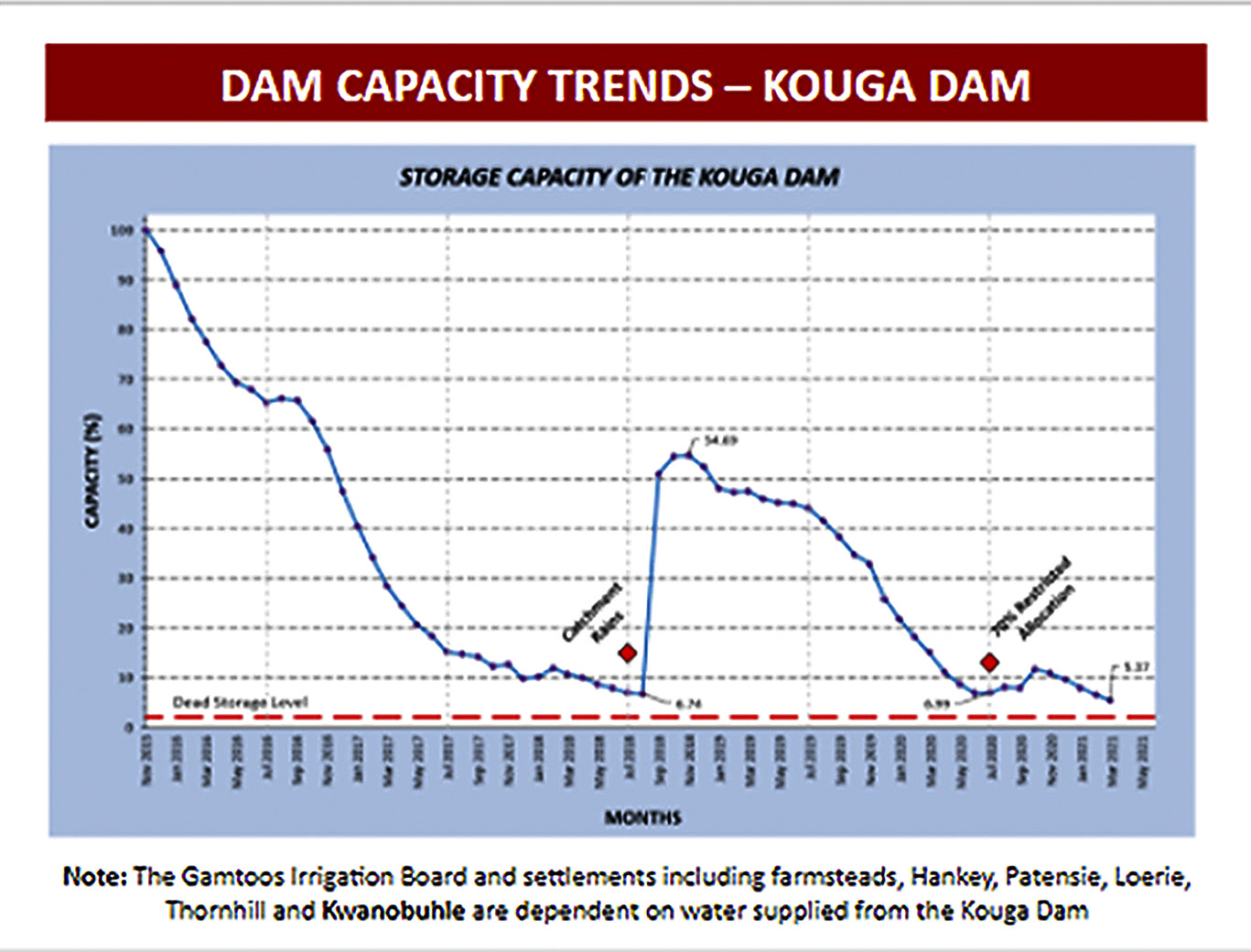
If no significant rain falls during winter, the prospects are dire. Mayor Bhanga said the water crisis was threatening the very viability of the metro.
“We understand that without water, all else fails.”
Bhanga explained that when the dams run dry, the city will lose about 50% of its water. It receives the other half from the Nooitgedacht scheme which draws water from the Orange River.
“Should we no longer be able to extract water from the dams, certain areas across the metro will experience major water disruptions. KwaNobuhle, outside of Kariega (formerly known as Uitenhage), one of the metro’s largest townships, is projected to be the first area to run out of water.
“The people from KwaNobuhle must know that that time has arrived.”
If the Churchill dam runs dry in August, large neighbourhoods and residential developments on the western side of the metro, including the St Albans Correctional Facility, housing 6,000 inmates, the busy commercial area of Korsten where there are two hospitals, Ibhayi where there is another hospital and many of the metro’s big industries, are projected to be next.
High-end suburbs including Mill Park, Walmer and Summerstrand, where Nelson Mandela University is situated, and the densely populated Humewood, Newton Park, South End and Mount Road, will be without water from October if no rains fall and the Impofu dam dries up.
Kariega and the surrounding areas are projected to run out of water if the Groendal dam runs dry – something that is projected to happen in December.
Bhanga said water loss due to leaks has been reduced from 39% as at June 2020, to 29,4% as at 28 February 2021.
“We are acutely aware of the poor state of our bulk water infrastructure,” he said.
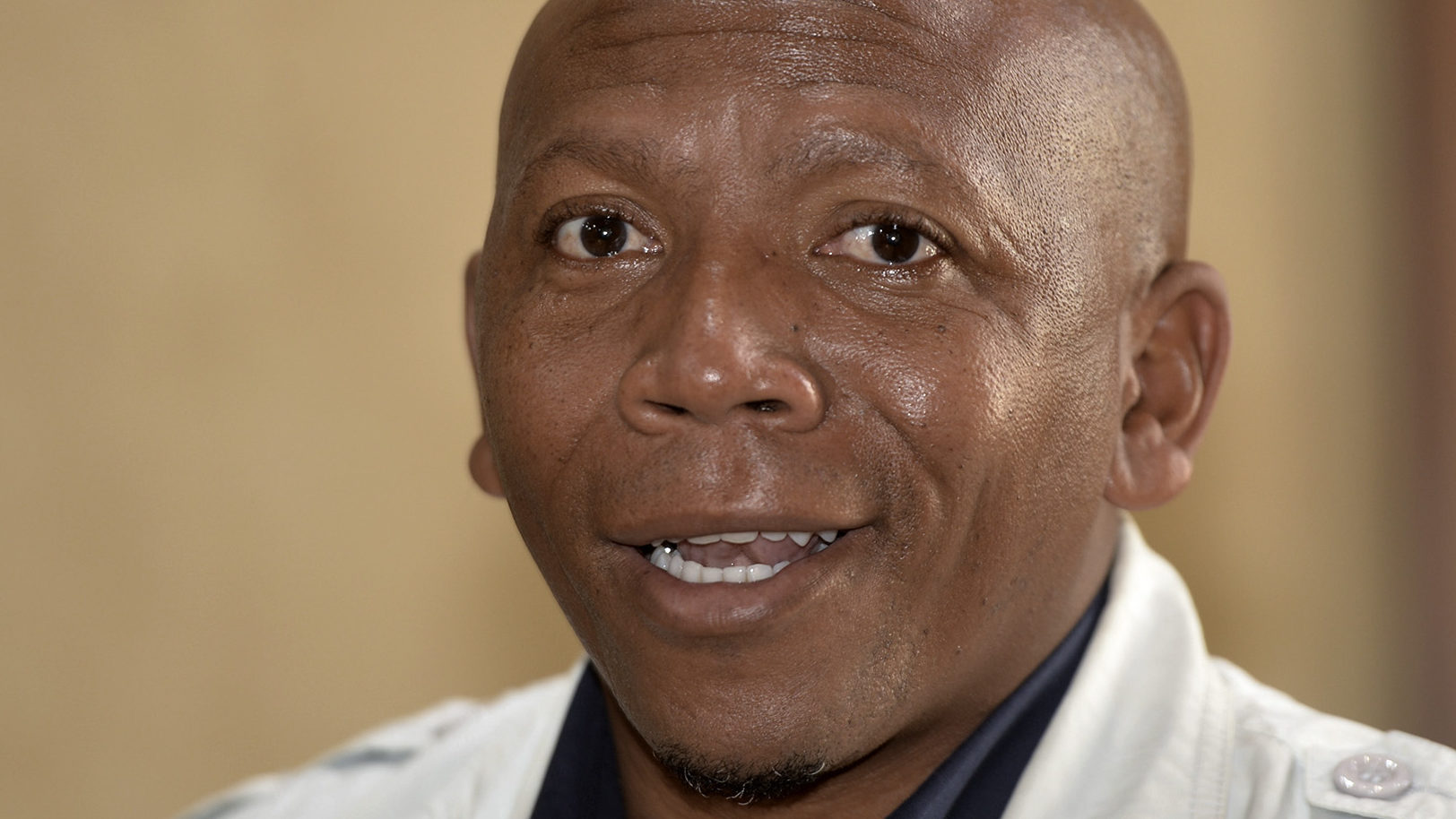
Councillor Masixole Zinto. (Photo: Deon Ferreira)
MEC for infrastructure, Masixole Zinto, said the city was currently fixing around 800 water leaks per month. The Nelson Mandela Bay Business Chamber has also undertaken to fix leaks at the worst-hit 100 schools.
Bhanga said they were meeting with the vice-chancellors of the province’s universities on Wednesday (28 April) to engage with them on how newly qualified students in chemical engineering and water management could be incorporated in the fight against the looming water crisis.
He said students would be absorbed into the municipality through its skills development programme. “These are the skills we should have started using a long time ago.”
“This is an ongoing challenge due to aging infrastructure. Often, as one leak is repaired, another takes its place. The municipality is identifying aging infrastructure that needs to be replaced, but this will take time.”
Bhanga said the city needed to reduce its water consumption by about 50 million litres a day.
“The time has come for people to report others who are wasting water.”
The average daily water consumption in the metro is around 301 million litres a day, but this must be reduced to 250 million litres to make any impact on the rate at which the dams are running dry.
Bhanga said higher water tariffs will be rolled out for residential, commercial and industrial consumers, as well as for institutional and government consumers, and water restrictors will be imposed to prevent excessive usage by the 100 highest consumers in the metro.
“This is a fight. We must fight together,” he said. “If we reach the crisis level, it can collapse services in the community.”
Martin said they will still have to send out “Restriction Notice number 8”. All households will receive a flow meter restrictor and water consumption must be limited to 50 litres per person per day or 15 kilolitres per household. Water to the premises of domestic ratepayers who use more than 15 kilolitres will be restricted. Industries and commercial users of water have been asked to reduce their consumption by 20%.
“We have received a directive from the department of water affairs that active measures must be put in place to reduce water consumption,” Martin said. “We have over extracted the Impofu and Churchill dams.”
He said they are implementing plans to provide water to KwaNobuhle, which will be the first to run dry by July 2021.
“Water will be delivered there by truck. We have 100 tanks that must be in place by the end of June,” he said.
He said they were planning to build a pipeline to take water from the Nooitgedacht scheme to KwaNobuhle, but that this would only be done by the end of November.
Martin added that additional water will become available to the metro in 2022 when the construction and commission of the Coega Kop Water Treatment Works is finalised.
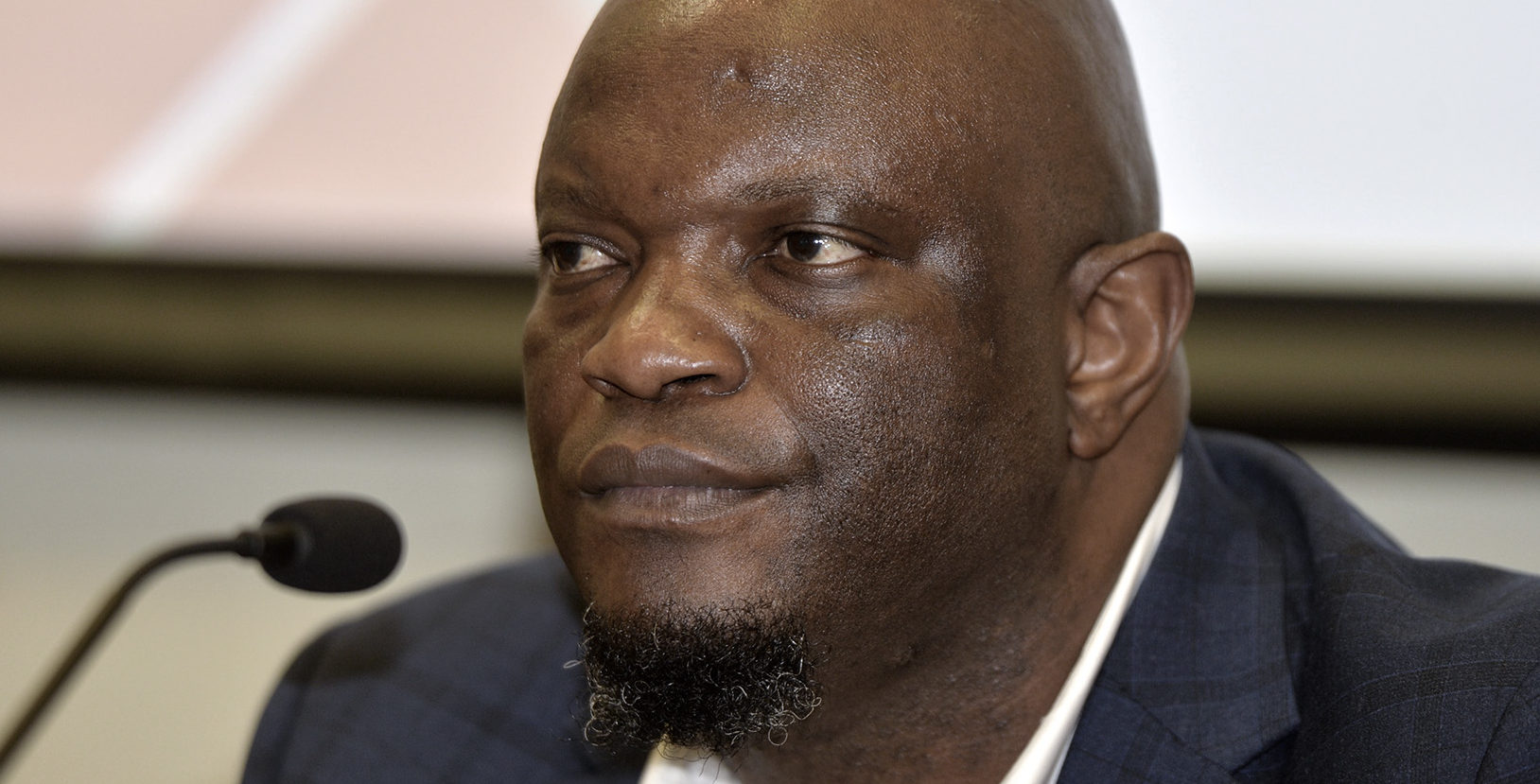
Nelson Mandela Bay director of water distribution Joseph Tsatsire. (Photo: Deon Ferreira)
Joseph Tsatsire, the metro’s director of water distribution, said the metro won’t have a Day Zero in the strict sense of the word. “We will have water from different sources to distribute to other areas.”
He said the department has discussed the “problem of sewage”, explaining that a lack of water in the sewage system will cause blockages as the system will lose “self-cleansing velocity”.
He said the plan was to use a system similar to one used in the United Kingdom, called the “Royal Flush”, where water was introduced into the system at strategic points to promote this “self-cleansing velocity”.
Martin said this water will be treated effluent from the city’s waste water treatment works. He said construction companies were already being encouraged to fetch treated effluent from the metro at no charge to use it for construction.
Bhanga said plans to deal with the city’s water crisis would be coordinated from his office. “We can manage this if we can work with communities.”
He said he had had a meeting with SAPS and metro police to discuss ways of dealing with water protests should they turn violent.
“People must not politicise this. We are proactive. We are going to the people. There is nothing we can do about the rain. We must manage this together. There is nothing the mayor can do about nature. Only God can do something about this.
We are engaging with communities. People need information. I trust that people are mature enough. I am not going to be a populist and tell people what they want to hear,” he said. DM/MC

Like what you’re reading? Sign up to the Maverick Citizen newsletter and get a weekly round-up sent to your inbox every Tuesday. Free. Because paywalls should not stop you from being informed.



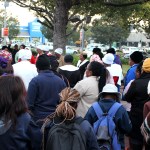

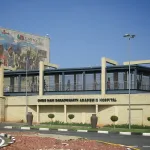
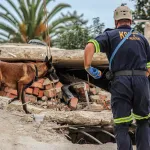











Severe water stress in an election year; can long-term problem-solving prevail?
Again. Abysmal planning, no contingency plan, emergency interventions. When will we ever employ municipal management that actually has savvy to think about needs in 25 years time? Yes, it’s deployment, corruption, every other political offence but even crooks have planning savvy.
evidently a result of stupid apartheid engineers who built the dams too big, so they cant fill. Go figure
This reasoning is even better: … Only God can do something about this.
Maybe the Cubans have a solution; they’re not put-off by God! 😉
This has been coming for years – and both the city and national government were warned. But corrupt leadership in the NMB municipality wanted to build a desalination plant (which they will not be able to afford to run) and blocked interventions that would have provided more water far more cheaply!
How did they spent R97 mil on 150 boreholes. That is R650k each! And they not online 🤔
Sad news all round BUT, please assure us that the opportunity to use bulldozers under engineer direction to remove the silt build-up where there previously was water in the dam, is being factored into the solution. And to spread that silt as a top soil in the appropriate areas/farms.
How do you spend average of R650k on 150 boreholes and end up with four potentials????
Drilling is about R1000/m. (I have a 120m borehole) Developing the borehole is the big cost. They drilled R97m or 150 holes each over 600 meters???
Somebody needs to take a look at that project!!!!